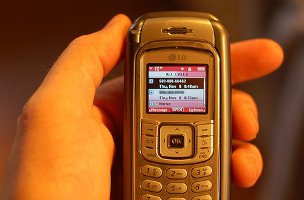Lowering Cellphone Call’s Pulse Rate
 How many times have you decided to make a one-minute cellphone call, rush everything you need to convey and say ‘bye to the called party only to realize upon checking your credit balance that you were charged for two (2) minutes because your exceeded your one (1) minute target by a few seconds?
How many times have you decided to make a one-minute cellphone call, rush everything you need to convey and say ‘bye to the called party only to realize upon checking your credit balance that you were charged for two (2) minutes because your exceeded your one (1) minute target by a few seconds?
In those instances, you would have hoped that you have talked more and not waste your money by paying for time you did not spend while calling your party. These sad incidents would soon be over once the National Telecommunications Commission (NTC) implements its new circular on new metering plan to cut cost of cellphone calls.
NTC in its Memorandum Circular No. 05-07-2009 has directed cellular phone companies to lower the pulse metering rate from 60 seconds to 6 seconds in its new circular. The pulse metering rate is the length of time calls are metered and charged to customers of cellular phone companies. Currently, telecommunications companies charge its prepaid subscribers around PhP6.50 per pulse, which consists of 60 seconds or also known as per-minute charging.
The new memorandum circular dated July 23, 2009 will not necessarily lower the cost of cellphone call per minute (it will remain at say PhP6.50/minute) but the subscriber will now be charged at increments of six (6) seconds (the new pulse metering rate) or PhP0.65 per 6-second pulse. The new metering scheme will in effect save the caller some money for the caller. For example, if all rates remain the same, a 1 minute 6 seconds call in the above situation will only cost the caller PhP6.50 plus PhP0.65 or PhP7.25 instead of PhP13.00 in the current way of charging a cellphone call.
NTC Commissioner Ruel Canobas said the new circular will be a big help because it will bring down call charging rate to the benefit of mobile phone users. The cellular phone companies are given four (4) months to implement the new rates because the companies have to make some changes to their systems. One provision of the circular will allow the cellphone companies to charge a higher fix rate for the first two pulses (first 12 seconds) of a call. The said provision can be compared to the flagdown rate you pay when you ride a taxi.
When implemented, the new NTC memorandum circular will be the third to come out after the Senate conducted a public hearing on the issue of vanishing phone load. The first circular made the expiration of prepaid load credits longer while the second one prohibited the sending of “push” or scam text messages by content providers unless the subscriber’s prior approval is secured.




this is new, I dont know this.
.-= TH´s last blog ..Digital Problem with new Proton Exora? =-.